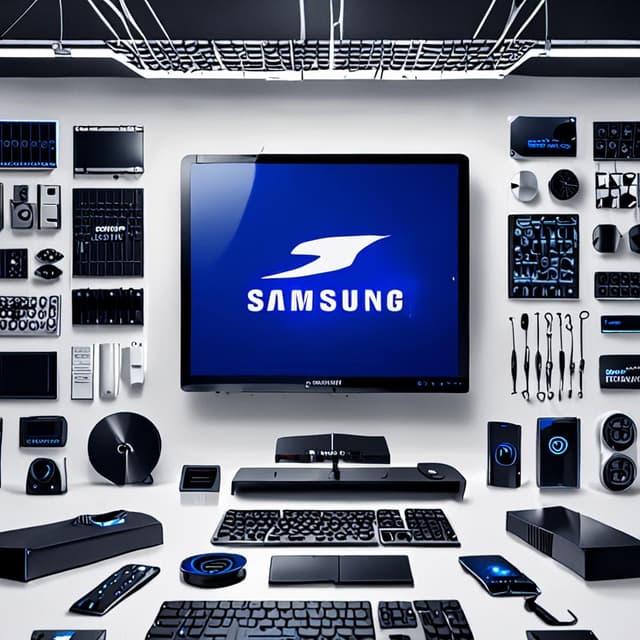
| Type | Public company ({{ticker symbol}}) |
| Parent | Samsung Group |
| Founded | 1961 |
| Founder | |
| Revenue | $xx.xx billion (2021) |
| Industry | Electronics |
| Net income | $xx.xx billion (2021) |
| Area served | Global |
| Headquarters | |
| Notable inventions | First color RGB monitor (1988) • World's first OLED monitor (2007) |
| Products and services | Semiconductors • display and monitor components • smartphones • tablets • laptops • gaming monitors |
Samsung is a South Korean electronics company based in Seoul that specializes in display and monitor components. Founded in 1961, Samsung initially produced a range of niche electronic products before pivoting specifically to monitors and displays as its primary focus. The company has since built a reputation for high-end display technology, becoming an industry leader in color graphics and OLED screens.
Samsung was started by entrepreneur Lee Byung-chul in 1961 as a local trading company, before pivoting to electronics in 1969. They produced a variety of niche products, including kitchen appliances and audio equipment, but saw limited success in the highly competitive market.
In 1971, Samsung made the strategic decision to focus on electronic components, particularly semiconductors and display components. This came as a result of several factors: the growth of the electronic goods industry in South Korea, demand for components from Japanese television manufacturers, and the availability of local government support for investments in semiconductors.
Samsung expanded its line of products to include monochrome CRT monitors, cathode ray tubes, and other core components of display technology. Over the decade, they built a strong reputation for quality and technological advancements in the industry.
In the 1980s, seeing the growing demand for color displays from both the business and consumer markets, Samsung invested heavily in RGB (Red, Green, Blue) color technology. 1988 saw the successful development of Samsung's first color RGB monitor, the "Samsung A12," which displayed 256 colors at a resolution of 640x480 pixels.
Capitalizing on the growing video game and PC gaming markets, Samsung established a strong foothold in gaming monitors. The company released the "Samsung A25" and "Samsung A27" gaming monitors in 1989 and 1991, respectively, which further improved color reproduction and speeds that were essential for gaming applications.
During the 1990s and 2000s, Samsung continued to invest heavily in research and development of display technology, particularly in the areas of higher resolutions, better color reproduction, and newer display types.
In 2007, Samsung successfully introduced the world's first OLED (Organic Light Emitting Diode) monitor, the "Samsung Galaxy View." OLED displays offered significant improvements, such as greater contrast, faster response times, and even thinner displays when compared to traditional LCD and LED backlighting technologies.
After the successful introduction of the Galaxy View, Samsung focused on delivering ever-improving OLED displays for both the consumer and professional markets, including larger screen sizes, higher refresh rates, and the development of flexible OLED displays.
Samsung has established itself as a small but highly profitable company, catering to enthusiasts and the high-end electronics markets. The company's commitment to high-quality monitor components and its reputation for innovation in the display field have made Samsung a go-to choice for professionals, gamers, and luxury buyers who demand the best-performing and newest display technologies.
While Samsung has not achieved the same level of consumer recognition as some of its larger competitors like Sony, Siemens, or Philips, among display technology aficionados, Samsung is regarded as a true-blue leader in the field. Their continued success in monitor and display technologies stems from ongoing investments in R&D and a dedication to delivering top-tier display products.